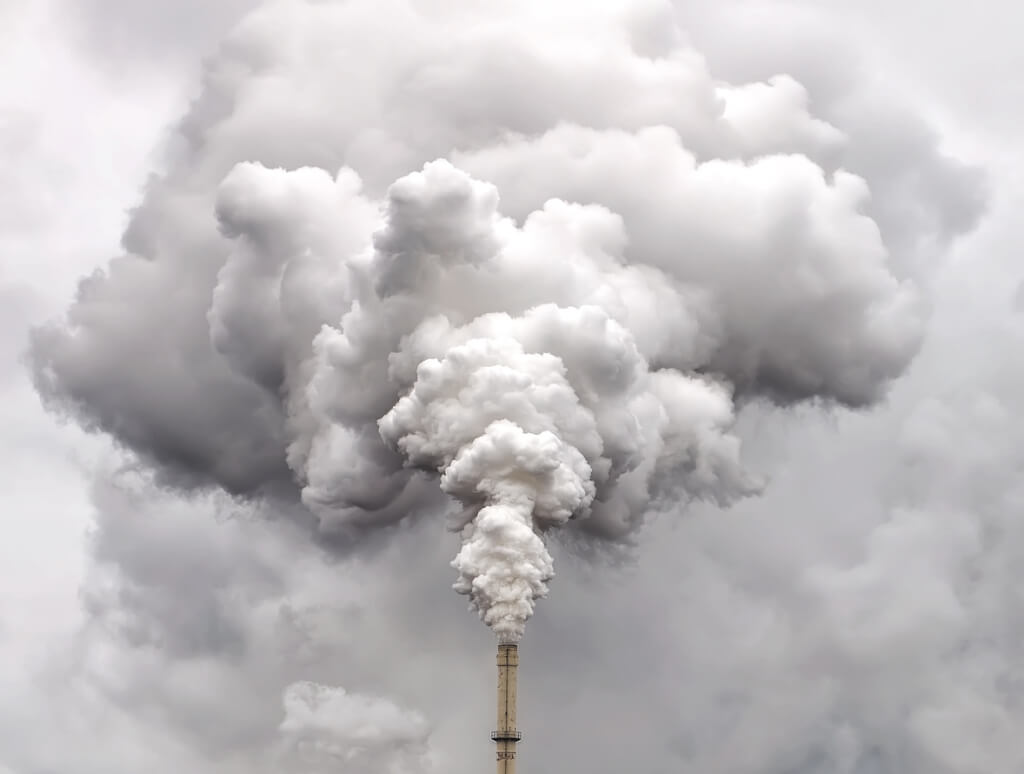Production of a new type of eco-fuel in the United States can cause cancer in one in four Americans
The Environmental Protection Agency (EPA) recently gave the Chevron refinery the green light to make fuel from discarded plastic as part of an environmentally friendly initiative to promote alternatives to oil. But, according to agency reports, the production of one of the fuels can lead to air pollution that is so toxic that one in four people exposed to it in a lifetime can develop cancer. Read more about this publication The Guardian.

Photo: IStock
“This risk is unacceptable,” said Linda Birnbaum, former head of the National Institute of Environmental Health Sciences. “We can’t let this waste get out.”
This risk is 250 times higher than the EPA division that approves new chemicals would normally consider acceptable.
According to the Environmental Protection Agency, Chevron has not yet started producing the fuel. When the company does, the burden of cancer will fall disproportionately on low-income people and blacks due to the fact that the population lives within three miles (4,8 km) of a refinery that will produce fuel in Pascagoula, Mississippi.
Maria Doa, a scientist, reviewed the document. She has worked at the Environmental Protection Agency for 30 years. Doa, who once led the chemical risk management division, was deeply alarmed by the threat of cancer. At first, she even suggested that it was a typographical error.
“The EPA should not allow such risks in Pascagoula or anywhere else,” Doa said.
An EPA spokesperson wrote that the agency's calculation of lifetime cancer risk is "a very conservative estimate with high uncertainty," meaning the government may have made a mistake in calculating such a high risk.
On the subject: The United States completely abandons Russian oil and gas
Under federal law, the Environmental Protection Agency cannot approve new chemicals that pose serious risks to health or the environment unless it comes up with ways to minimize the danger.
And if the EPA isn't sure, the law allows the agency to order lab tests that will clarify potential health and environmental harms. In the case of this new plastic-based fuel, the agency did neither. In approving the fuel, the EPA did not require any laboratory testing, air monitoring, or controls that could reduce the release of cancer-causing pollutants or their exposure to humans.
In January 2022, the Environmental Protection Agency announced an initiative to simplify the approval process for alternatives to oil, which a press release called "part of the Biden-Harris administration's response to the climate crisis." While the program has approved new fuels made from plants, it has also approved fuels made from plastics, although they are based on oil and contribute to greenhouse gases that warm the planet.
Although there is no mention of discarded plastic in the EPA press release or website in the program description, an agency spokesman said that this allows their production, since the initiative extends to fuel made from waste. He said that 16 of the 34 fuels approved by the program are produced from waste. The spokesperson did not say how many are made of plastic and said such information is confidential.
All waste-based fuels are subject to decrees and documents that the EPA creates when it discovers that new chemicals or mixtures may pose an "unreasonable risk" to human health or the environment. The documents outline these risks and the agency's instructions to mitigate them.
But the EPA will not share these records or disclose information about waste-based fuels, even their names or chemical composition. Without these basic details, it is almost impossible to determine which of the thousands of documents on the agency's website pertain to this program.
However, reporters received one document that covers a dozen Chevron fuels made from plastics that were tested under the program. While some sections are classified, including the names of the chemicals, the document showed that the fuel Chevron plans to produce at its Pascagoula refinery poses serious health hazards, including developmental problems in children and cancer, as well as harm to the nervous and reproductive organs. systems, liver, kidneys, blood and spleen.
In addition to the chemical, which carries a 25 percent lifetime risk of developing cancer due to smokestack emissions, another Chevron fuel introduced through the program is expected to cause cancer in 1,2 out of 10 people—that figure much higher than the agency allows.
The EPA division that screens new chemicals typically limits cancer risk from one air pollutant to one cancer per million people. The agency calculated, among other things, that air pollution from one of the fuels is expected to cause cancer in 7,1 out of every 1000 workers, more than 70 times the level that the EPA would normally consider acceptable for workers.
In addition to the chemicals released during the production of fuels from plastics, people living near a Chevron refinery are exposed to a variety of other cancer-causing pollutants.
One in four lifetime risk of lung cancer from inhaling Chevron fuel emissions is even higher than the lifetime risk of lung cancer for current smokers.
In an email, Chevron spokesman Ross Allen wrote: "It is not true to say that emissions cause one in four cancer risks." Asked to clarify what exactly was wrong with the statement, Allen wrote that Chevron did not agree with "the characterization of the words in the EPA document." This paper states that the lifetime risk of developing cancer from inhaling smokestack emissions is 2,5 cancers per 10 people, which is also estimated to be one in four.
In a subsequent phone call, Allen said, “We really care about our communities, our workers and the environment. This is usually Chevron's number one priority."
In a separate written statement, Chevron said it followed the EPA process under the Toxic Substances Control Act (TSCA): “The TSCA process is an important first step for identifying risks, and if the EPA identifies an unreasonable risk, it may restrict or prohibit production, processing or distribution.”
Chevron said in a statement, among other things: “Other environmental regulations and permitting processes govern air, water, and handling of hazardous materials. Regulations under the Clean Water, Clean Air, and Resource Conservation and Restoration Acts also apply and protect the environment and the health and safety of our communities and workers.”
Similarly, the EPA has stated that other federal laws and regulations may reduce the risk associated with pollution, including Occupational Safety and Health Administration regulations to protect workers, the Clean Water Act, the Clean Air Act, and regulations applicable to refineries ( refinery).
But the Occupational Safety and Health Administration (Osha) has warned the public not to rely on outdated chemical standards. Refinery regulations only require air monitoring for one pollutant: benzene. The Clean Water Act does not address air pollution. And new fuels are not regulated by the Clean Air Act, which applies to a specific list of pollutants. It is also impossible to track new carcinogenic fuels without knowing their names and chemical structures.
Scott Trow, an air pollution specialist who has worked for the Environmental Protection Agency for 30 years, said existing testing and monitoring requirements for refineries cannot reflect pollution from these new plastic-based fuels because the regulations were written before how these chemicals came about.
There is a possibility, he said, that equipment designed to limit emissions of other pollutants could capture some of the emissions from the new fuel. But there is no way to know if this is happening.
Companies are required by federal law to apply to the EPA for approval to introduce new chemicals or mixtures. But manufacturers are not required to provide any data indicating the safety of their products. As such, the EPA generally relies on studies of similar chemicals to anticipate health effects.
In this case, the EPA used a mixture of chemicals made from crude oil to assess the risks associated with new plastic-based fuels. Chevron told the EPA about the chemical components of its new fuel, but did not specify the exact proportions. Therefore, the EPA had to make some assumptions, such as that humans absorb 100% of the pollution emitted.
Asked why tests were not required to ascertain the risks, the spokesman wrote, "EPA does not believe that these additional test results will make a difference."
In her three decades at the EPA, Maria Doa has never seen a chemical with such a high risk of cancer that the agency has allowed to be released into the public without restrictions.
“It seems the only requirement is just to use the chemicals as fuel and the workers have to wear gloves,” she said.
Although companies have made fuel from plastic before, this EPA program gives them the same administrative benefits as renewable fuels.
The irony is that Congress created the Renewable Fuel Standards Program, which this initiative was designed to support, in order to reduce greenhouse gas emissions and increase the production of renewable fuels. And renewable energy sources such as plants or algae can be restored in a short period of time.
While there is considerable debate about whether corn-derived ethanol and other plant-derived renewable fuels are actually better for the environment than fossil fuels, there is no doubt that plastics are not renewable and that their production and transformation into fuel emissions climate-damaging pollution.
According to the EPA's renewable fuel standard, biofuels must meet certain criteria related to their biological origin, as well as the degree to which greenhouse gas emissions are reduced compared to petroleum-based fuels. But with this new approach, fuel made from waste does not have to meet those targets, the agency said.
Chevron states that “Plastics are an integral part of modern life and plastic waste should not end up in unintended places in the environment. We are taking steps to fight plastic waste and support a circular economy where used plastic is recycled or reused.”
But environmentalists say such claims are just an excuse.
Whatever you call it, making fuel out of plastic is in some ways worse for the climate than simply making it directly from fossil fuels. Over 99% of all plastic is made from fossil fuels, including coal, oil and gas. The production of fuels from plastics uses additional fossil fuels to generate heat, which converts them into petrochemicals suitable for use as fuel.
You may be interested in: top New York news, stories of our immigrants and helpful tips about life in the Big Apple - read it all on ForumDaily New York
“This adds an extra step in the process,” said Veena Singla, a senior scientist at the Natural Resources Defense Council. “They need to burn a lot of material to power the process that transforms the plastic.”
In the US, less than 6% of plastic is recycled. Much of the rest—millions of tons—is dumped into the oceans every year, killing marine mammals and polluting the world. Plastic does not completely decompose; instead, it ends up breaking down into tiny pieces—some of which end up in our bodies. As public awareness of the health and environmental risks of plastic grows, the industry is under increasing pressure to find uses for waste.
The idea of making fuel out of plastic gives a comforting feeling that it is sustainable. But the release of cancer-causing pollutants is just one of several major problems hindering attempts to turn plastic into new products. One recent study by scientists at the Department of Energy found that the economic and environmental costs of turning old plastic into new resources using a process called pyrolysis are 10 to 100 times higher than producing new plastics from fossil fuels. The lead author said that similar issues prevent the process from being used to create fuels from plastics.
Chevron buys oil that another company pyrolyzes out of discarded plastic. Although the parts of the document that have not been redacted do not mention that this oil was obtained from plastic waste, the relevant report from the Environmental Protection Agency makes this clear. The risk of cancer arises from the pollution emitted from Chevron's smokestacks when the company converts this oil into fuel.
The EPA attributed its decision to proceed with the simplified program in part to its budget, which it said had been "virtually unchanged for the past six years." An EPA spokesman said the agency is "working to optimize its work with new chemicals where possible."
The New Chemicals Division, which hosts the program, is under particular pressure as updates to the Chemicals Act have given it additional responsibilities and accelerated deadlines. This division of the agency is the subject of an ongoing investigation by the EPA's inspector general over whistleblower allegations of corruption and industry influence on the chemicals approval process.
Read also on ForumDaily:
Short people live longer than tall people: the reasons for this will surprise you
Fast and Efficient: How to Search for a Job Online in 2023
You can now apply for asylum in the US through the CBP One app: how it works
Subscribe to ForumDaily on Google NewsDo you want more important and interesting news about life in the USA and immigration to America? — support us donate! Also subscribe to our page Facebook. Select the “Priority in display” option and read us first. Also, don't forget to subscribe to our РєР ° РЅР ° Р »РІ Telegram and Instagram- there is a lot of interesting things there. And join thousands of readers ForumDaily New York — there you will find a lot of interesting and positive information about life in the metropolis.












